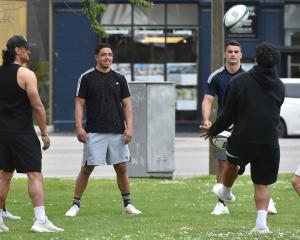Provincial unions are in the black to the tune of more than $1 million but there are some worrying signs on the horizon.
The annual Deloitte sport review, a look at the performance of the 14 provincial unions in the ITM Cup, has shown unions appear to have finances under control and the books are being balanced.
Overall, the 14 unions have recorded a surplus of $1.2 million for the 2014 year, down significantly from the year before when a surplus of $3.2 million was recorded.
In 2012, the figure was a surplus of $500,000.
The previous five years all produced losses.
The Otago union produced a profit of $318,873 last year, down from the $406,859 it generated in 2013 which was a good result from the union,Waikato and Wellington were the only unions which recorded losses.
The breakdown of revenue for unions showed nearly 69% of its income came in the form of grants and sponsorship.
Match-related income made up more than 15% of income for unions while other sources, such as administration fees, were responsible for 16% of income.
The report said income from grants and sponsorship continued to be reliant on grants from New Zealand Rugby and non-casino gaming trusts.
Combined match-related income decreased by $600,000 from 2013 to $10.3 million, while revenue from grants and sponsorships increased by $400,000 to $46.7 million.
Over the past five years, both match-related income and income from grants and sponsorships have decreased - down 31.1% and 8.8% respectively.
Unions have cut costs over the past five years, dropping expenses by 14.7% to allow unions to remain in a positive position despite revenue dropping.
Game-day income was almost breaking even for the unions but holding a final undoubtedly boosted gate takings as both Taranaki and Manawatu - the winners of the Premiership and the Championship respectively - recorded large rises in match-day income.
The Ranfurly Shield still holds sway, enabling holder Hawkes Bay to record an 81% increase in match-day income after it held the shield for most of last season.
The report shows the operating income of all unions.
Otago is the lowest of the 14 unions, with revenue of $2.7 million.
That contrasts with a union such as Auckland which had an income of more than $10 million.
The report said despite the encouraging results many unions remained in precarious equity positions with half of the unions having less than $1 million in equity, which could be wiped out in a couple of bad years of financial performance.
The report acknowledges the impact television broadcasts have on crowds going to matches.
Unions are in a tough spot as Sky Television is a major funder for New Zealand Rugby which then grants some of that money to unions.
But by broadcasting games, unions are missing out on income from the gate as people stay at home and watch the match on television.
Some unions have dropped ticket prices to attract spectators and Taranaki was one union which did that with some success.
Taranaki's increased gate may though have more to do with improved results on the field.
Overall, match-day revenues have decreased 40% over the past five years, although they picked up ever so slightly last year.
The report said the big picture behind pricing for any business operation was about drawing in customers, both new and old, and to keep them coming back.
This was no different for the unions.
People attending rugby matches were not looking for a transaction; they wanted an enjoyable experience.
Unions had to consider what value a supporter would put on coming to a game, above and beyond the team's performance, as well as recognising that not all supporters were the same.












